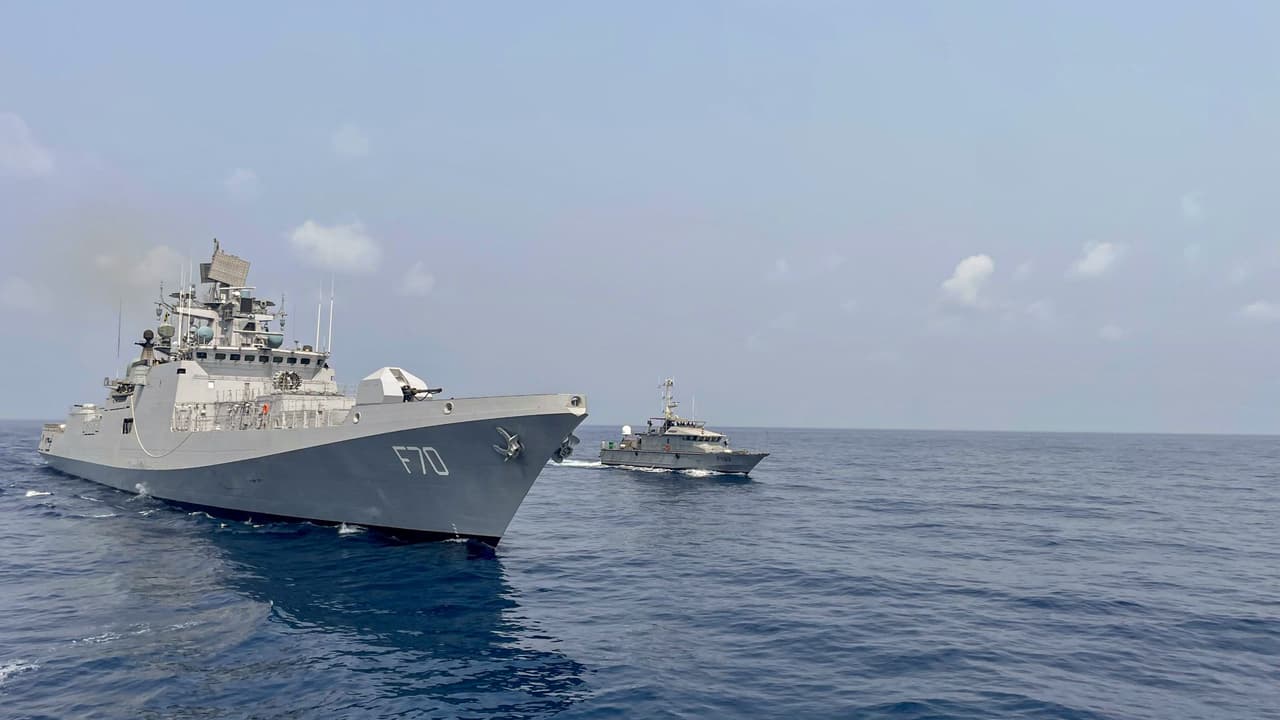INS Tushil and INS Tamal, advanced Russian-built Talwar-class stealth frigates, significantly boost India’s maritime power and strategic edge in the Indian Ocean Region.
The Indian Navy’s commissioning of INS Tushil and the anticipated induction of INS Tamal in June 2025 mark a significant leap in India’s maritime capabilities. These advanced stealth frigates, part of the Talwar class and built in Russia, embody cutting-edge technology and formidable firepower. With INS Tushil already strengthening the Western Fleet at Karwar and INS Tamal set to join, these warships send a clear warning to adversaries—particularly Pakistan—showcasing India’s dominance in the Indian Ocean Region (IOR). Their sleek design, lethal weapons, and robust specifications make them a game-changer in naval warfare.

What is a Frigate?
A frigate is a versatile, medium-sized warship designed for speed, agility, and multi-role operations. Positioned between larger destroyers and smaller corvettes, frigates excel in escorting aircraft carriers, patrolling vast waters, and engaging threats from air, sea, and underwater.
Historically, frigates were fast sailing ships used for scouting and protecting trade routes. In modern times, they are high-tech platforms equipped with missiles, radar, sonar, and stealth features, making them vital for combat, maritime security, and humanitarian missions like disaster relief.
INS Tushil and INS Tamal: Engineering Marvels
INS Tushil, commissioned on December 9, 2024, and INS Tamal, expected in June 2025, are guided-missile frigates under Project 1135.6 (Talwar class). Constructed at Russia’s Yantar Shipyard, these frigates are part of a $2.5 billion India-Russia deal, with INS Tamal marking India’s last imported warship. Featuring 26% indigenous content, including 33 Indian-made systems, they reflect India’s push for self-reliance while leveraging Russian design expertise. Their stealth capabilities reduce radar detection, ensuring a tactical edge in combat.
Key Specifications:
- Length: 125 meters
- Displacement: 3,900 tons
- Crew Strength: ~180–200 personnel (officers and sailors)
- Propulsion: Ukrainian Zorya-Mashproekt M7N1 gas turbines, enabling speeds over 30 knots
Armament:
- BrahMos supersonic cruise missiles (range: 400+ km)
- Shtil surface-to-air missiles (24 in 2x12 VLS cells)
- Anti-submarine torpedoes and rockets
- 76mm Super Rapid Gun Mount (SRGM)
Sensors and Systems:
- Advanced radar and sonar for multi-domain detection
- Electronic warfare suite and countermeasures
- Stealth design for reduced radar cross-section
Operational Role:
Built for blue-water operations, capable of multi-domain warfare in open oceans and coastal waters. These frigates combine agility, firepower, and technology, making them ideal for safeguarding India’s maritime interests.
A Strategic Blow to Pakistan
The arrival of INS Tushil and INS Tamal sends shivers through Pakistan’s naval establishment. Equipped with BrahMos missiles, which strike with pinpoint accuracy at supersonic speeds, these frigates pose a direct threat to Pakistan’s ships and coastal infrastructure.
Their anti-submarine torpedoes and Shtil missiles are effective against Pakistan’s submarines and aircraft, while their stealth design makes them elusive targets. Stationed at Karwar, close to Pakistan’s coastline, INS Tushil already enhances India’s Western Fleet. INS Tamal will further solidify this advantage.
In the Arabian Sea, where Pakistan seeks to challenge India’s influence, these frigates assert India’s unchallenged supremacy, deterring any misadventure.
The Road Ahead
As INS Tamal’s crew undergoes training in Russia for its 2025 commissioning, India is also constructing two additional frigates at Goa Shipyard, set for delivery by 2026. This transition to indigenous shipbuilding aligns with the “Atmanirbhar Bharat” initiative, aiming to end reliance on foreign-built warships.
Despite challenges like the Russia-Ukraine war delaying Ukrainian engine supplies and COVID-19 disrupting production timelines, INS Tushil’s successful commissioning reflects India’s resilience and determination.
These frigates will ensure the Indian Navy remains a formidable force in the IOR, ready to respond to any threat and protect national interests.
INS Tushil and INS Tamal are more than warships—they are symbols of India’s maritime ambition and technological prowess. With their impressive length, weight, crew strength, and lethal weaponry, they stand ready to dominoate the seas.
For Pakistan, the message is unmistakable:
India’s Navy—powered by these stealth frigates—is a force that commands respect and ensures peace through strength.
Jai Hind!!
(The author Girish Linganna of this article is an award-winning Science Writer and a Defence, Aerospace & Political Analyst based in Bengaluru. He is also Director of ADD Engineering Components, India, Pvt. Ltd, a subsidiary of ADD Engineering GmbH, Germany. You can reach him at: girishlinganna@gmail.com)


